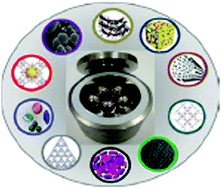Mechanochemical synthesis of highly porous materials
Abstract
Conventional synthesis methods of functional materials are usually time- and energy consuming and contribute to the accumulation of waste solvents. An alternative solution is the use of environmentally friendly recipes such as mechanochemical synthesis, which may be employed for large-scale production of materials. Mechanochemistry has been applied in various areas, such as metallurgy, mineral processing, construction and synthesis of organic compounds, and currently it is experiencing a renaissance because of its successful implementation for the synthesis of diverse organic, inorganic and organic–inorganic hybrid nanomaterials. Here mechanochemical synthesis of highly porous materials is reviewed with special emphasis on novel sorbents. Mechanochemically-assisted methods are well suited for the preparation of highly porous carbons (such as lignin- or tannin-derived carbons), metal–organic frameworks (e.g., MOF-5, MIL-101 and U-67) or covalent organic frameworks with specific surface areas up to 3500 m2 g−1. Recently, ball milling was also utilized for the synthesis of ordered coordination polymers and perfectly ordered mesoporous carbons. Nowadays, mechanochemistry has become a powerful and quite universal method for the preparation of various materials. Hence, there is a need for a review summarizing the current accomplishments in this field. Most of the mechanochemically obtained porous materials reported so far have been designed for adsorption, catalysis and energy storage related applications.

- This article is part of the themed collection: Recent Review Articles


 Please wait while we load your content...
Please wait while we load your content...